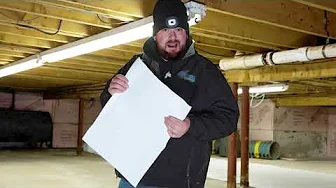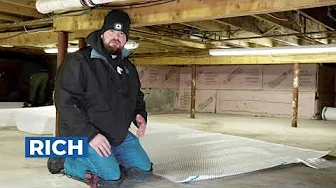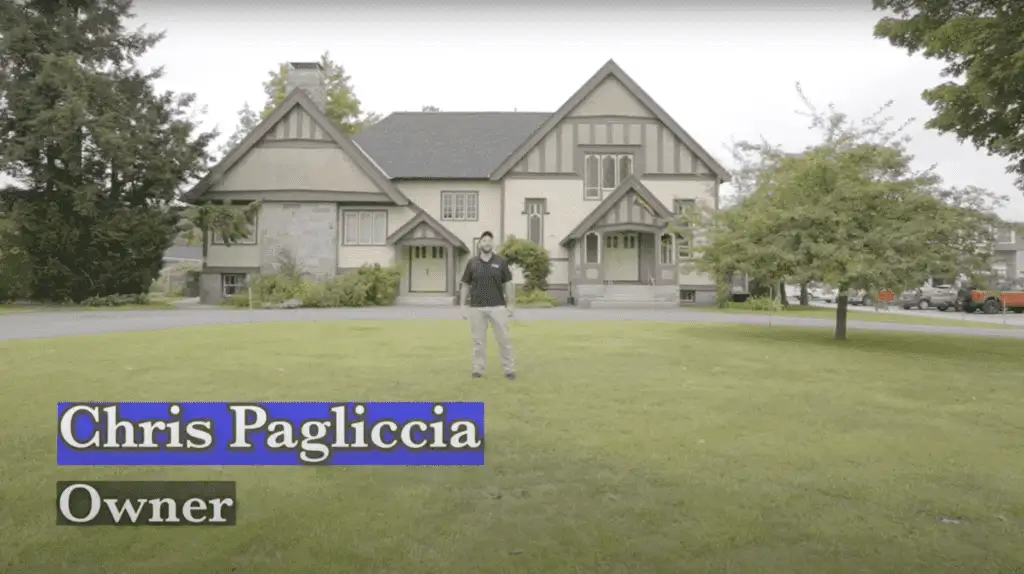Foundation Crack Repair Hingham MA
Cracks in your foundation can lead to serious structural issues if not addressed promptly. These cracks often result from settling, hydrostatic pressure, or shifting soil. Left unattended, they can allow water to seep into your basement, compromising the integrity of your home and creating potential for mold growth.
Acting quickly to repair foundation cracks ensures the safety and longevity of your property, especially in areas like Hingham, MA, where weather and soil conditions can exacerbate such issues.
Real People - Real Great Results
Crawl Space Video Playlist
Common Causes of Foundation Cracks
Cracks don’t just show up out of nowhere. They’re a signal that your home’s foundation is dealing with forces it wasn’t necessarily built to handle. In Hingham, MA, specific environmental and structural factors amplify the risk, making it crucial to pinpoint the root cause. Here’s a no-nonsense breakdown of why these cracks happen:
- Settling of the Foundation: Every house moves. It’s the kind of slow drift most people never notice. Over time, soil beneath your foundation shifts or compresses, especially if it wasn’t compacted well during construction. This uneven movement can tug at the concrete, leaving behind those telltale lines. Some settling is normal, but when it’s aggressive, cracks are inevitable.
- Hydrostatic Pressure: Water has a way of messing with solid structures, especially when it collects around your home. After a New England downpour or during spring thaw, groundwater builds up and presses against your foundation walls. Think of this like blowing up a balloon—too much internal force and eventually something gives. The result? Cracks. Often horizontal. Often bad news.
- Soil Erosion: Poor drainage around your property creates more problems than puddles in your yard. Over time, water runoff erodes the soil that’s supposed to be holding everything steady. Without that support, your foundation begins to sag or shift, and cracks—sometimes large ones—start to appear.
- Temperature Changes: Hingham winters don’t mess around. Freezing and thawing cycles cause the materials in your foundation to expand and contract repeatedly. Combine that with already stressed concrete, and it’s like bending a paperclip back and forth—it eventually snaps.
Understanding these causes isn’t just for curiosity. Identifying why your foundation is cracking lays the groundwork (literally) for effective repairs. Don’t guess, though. Get it inspected before a small fissure snowballs into something catastrophic. In Hingham, the climate and soil conditions are rarely forgiving.
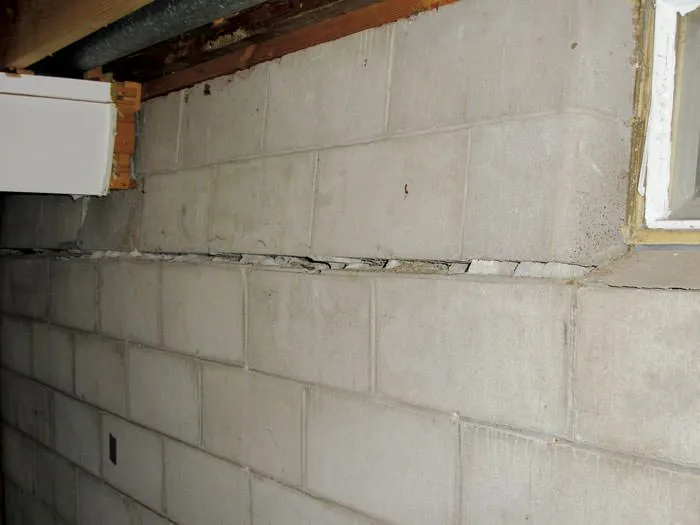
Signs You Need Foundation Crack Repair
Cracks in your foundation don’t always leap out at you, but if you know what to look for, the warning signs are unmistakable. Some are subtle, like a sticky window that used to slide open effortlessly. Others are harder to ignore, such as water pooling in your basement after even the lightest rain. Here’s how to spot trouble before it spirals into something worse:
- Visible Cracks in Basement Walls or Floors: The most obvious red flag. Pay attention to cracks that widen over time or show signs of moisture, as these can indicate deeper issues.
- Bowing or Leaning Walls: If your foundation walls start looking like they’ve had a little too much to drink, the structural pressure from soil or water buildup could be to blame.
- Water Seepage or Damp Basement Areas: Excess moisture is a not-so-subtle hint that your cracks may have become an open door for water infiltration.
- Sticking Windows or Doors: Frames that suddenly refuse to budge or latch smoothly may not just be temperamental—shifts in your foundation can skew their alignment.
- Uneven Floors: Notice a slope or bounce where there wasn’t one before? That’s more than an annoyance; it’s a potential signal of foundational shifts below.
The trick is catching these signs early. Sure, you could wait until you need to wade across your basement in rubber boots—but by then, you’re looking at a much bigger mess (and expense). Spot these early, act fast, and save yourself the headache later.
Types of Foundation Cracks
Not all cracks are created equal, and understanding the type of crack in your foundation is key to determining the necessary repairs. Here’s a breakdown of the main types:
- Vertical Cracks: These tend to be the most common and, frankly, the least concerning. Vertical cracks typically occur due to the natural settling of your home over time. While they may look alarming, most vertical cracks are more of a cosmetic issue than a structural one—though they still need to be sealed to prevent water intrusion. Think of them as the sneeze of foundation issues: worth addressing but rarely life-threatening.
- Horizontal Cracks: If vertical cracks are the sneeze, horizontal cracks are the full-blown fever. These can indicate significant pressure against your foundation walls, often caused by hydrostatic pressure from water-saturated soil. Left unchecked, horizontal cracks can lead to bowing walls and serious structural risk. Translation: this is not a DIY situation. Call in the pros.
- Diagonal Cracks: These are like the wild cards of foundation cracks. Usually caused by uneven settling, diagonal cracks often appear at angles and can vary in severity. The direction and size of the crack matter—a thin, hairline diagonal crack might just need minor sealing, but a wider, stair-step crack is a red flag for bigger stability problems. Bottom line? Don’t ignore these.
- Hairline Cracks: Hairline cracks are tiny and often superficial, especially right after new construction. They’re usually caused by the natural curing process of concrete and rarely cause immediate concern. However, don’t let their small size fool you—water loves to sneak into even the smallest gaps. Sealing these early is a smart defensive move.
Knowing the type of crack you’re dealing with doesn’t just make you sound like a pro at dinner parties—it’s essential for determining the right solution. Whether it’s a quick epoxy seal or a full-scale structural fix, addressing the issue promptly can save you money and headaches down the road.
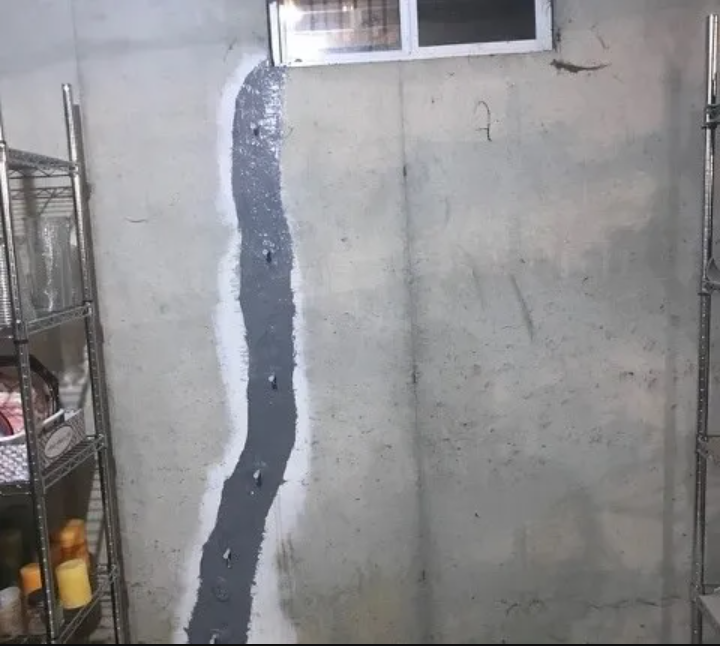
Preventing Future Foundation Cracks
Preventing foundation cracks is less about heroics and more about sticking to the basics. Water is the usual suspect, so your first job is to control it. Start by ensuring proper drainage: clear your gutters regularly, extend your downspouts at least 5 feet away from your home, and fix any leaks. Pooling water around the foundation spells trouble, so give it nowhere to settle.
Next, focus on how your yard slopes. A properly graded landscape should direct water away from your house, not toward it. If the grading’s off, time to grab a shovel or call someone who will. Small elevations make a big difference.
Dry seasons can also sneak up on you, causing soil to contract and shift. Keep the soil moist—not saturated, just damp enough to maintain its consistency. A soaker hose around the perimeter of your foundation can work wonders when things dry out. Consistent soil means less movement, which means fewer cracks.
For cracks already present, don’t just ignore them—seal them up. Even if they seem minor, they’re an invitation for moisture, and moisture loves to expand tiny issues into massive ones over time. A little epoxy or silicone sealant now can save you the headache and expense of water damage later.
Simple habits, like routine maintenance and regular inspections, are your best defense. Prevention isn’t glamorous, but it’s reliable.
Methods for Foundation Crack Repair
When it comes to fixing foundation cracks, there’s no one-size-fits-all solution. Repairs should be tailored to the specific type and severity of the crack, as well as its underlying cause. Here are some common methods:
- Epoxy or Polyurethane Injection: Think of this as the Band-Aid approach—but one that lasts. For small to medium cracks, this method involves injecting a liquid epoxy or polyurethane foam into the crevice. Once cured, the material hardens and seals the crack, preventing water infiltration and further damage. It’s effective for non-structural cracks, though it won’t address underlying soil or settling issues. Quick, clean, and relatively inexpensive, it’s a favorite for homeowners dealing with leaks but no major structural concerns.
- Carbon Fiber Reinforcement: Got a crack that’s shouting “stress and pressure”? Carbon fiber might be the answer. This method works wonders for horizontal or diagonal cracks that weaken your foundation walls. Strips of carbon fiber fabric are adhered to the inside of the wall, acting like a high-strength brace to prevent further movement. The process is minimally invasive and unbelievably durable, keeping walls stable without tearing up your property. It’s functional, fairly affordable, and leaves you wondering why you didn’t do it sooner.
- Exterior Drainage Solutions: Sometimes the crack is the symptom, and water is the disease. If hydrostatic pressure is pushing your foundation to its limits, you’ll need to address the source of the problem—excess water pressing against your walls. Exterior drainage solutions often include installing footing drains, improving yard grading, or sealing the foundation with waterproof coatings. While more labor-intensive and pricey, this approach tackles the root cause, not just the visible damage. Think of it as playing offense, not defense.
- Piering or Underpinning: For more extreme cases of uneven settling, you’re looking at a structural fix. Piering (sometimes called underpinning) involves driving steel piers deep into the bedrock or stable soil beneath your foundation. These piers then act like stilts, stabilizing and sometimes lifting the foundation back to its original position. It’s not a weekend DIY job, but when your home’s integrity is at risk, this heavy-duty fix is worth every penny. Bonus: it can often save you from even bigger expenses down the line.
- Picking the Right Repair: Foundation repairs aren’t one-and-done magic tricks. The right fix depends on the type, location, and cause of the crack—and sometimes on whether you want a long-term solution or just a stopgap. Consulting a professional ensures you don’t throw money at the wrong method (or make the problem worse). After all, your home deserves better than a patch job with duct tape.
The Importance of Professional Inspection
You could DIY some things around the house: paint a room, fix a door hinge, maybe even tackle a little plumbing. But when it comes to your foundation, don’t play contractor. Small cracks might look harmless, but they could be hiding larger, structural red flags. Skipping a professional inspection—or worse, guessing at repairs—can turn a manageable issue into a wallet-emptying nightmare.
Here’s the thing: foundation problems aren’t one-size-fits-all. A crack caused by natural settling might require a simple epoxy injection, while a crack from hydrostatic pressure could signal more serious water-related stress. Without a trained eye, it’s impossible to know which problem you’re actually dealing with. Foundation specialists not only identify the root cause but also recommend the right repair method for long-term results.
In Hingham, MA, where weather extremes and clay-heavy soil play a big role in foundation wear and tear, local professionals bring critical expertise. They’ve seen firsthand how New England winters and spring thaws mess with foundations, and they know what solutions will actually hold up.
Bottom line: a professional inspection is practical, not paranoia. It ensures you’re addressing the problem fully, not just treating the symptoms. Spend a little now to save a lot later.
Choosing a Foundation Repair Contractor in Hingham, MA
Selecting the right contractor for your foundation crack repair isn’t just a box to check—it’s the backbone of protecting your home’s future. The market is full of options, but not all contractors are created equal. A bad hire can lead to shoddy work, hidden costs, or even bigger problems down the line. Here’s how to approach this process like a seasoned pro.
- Make Licensing and Insurance Non-Negotiable: Skip anyone who can’t provide proof of their license and insurance. Licensing means they comply with state regulations, while insurance protects you in case something goes wrong. Hingham, MA is no stranger to unpredictable weather, and you’ll want a contractor who knows how to operate safely in these conditions without exposing you to liability.
- Look for Local Expertise: A contractor who understands Hingham’s unique soil composition and freeze-thaw cycles automatically has an edge. This isn’t just about geography; it’s about battle-tested experience. Ask if they’ve worked on homes in your area and what challenges they’ve faced. A certain comfort with glacial soils and coastal weather conditions is crucial here.
- Scrutinize References and Past Work: Ask for references, but don’t stop there—follow up. Call previous clients to hear about their experience firsthand. Did the contractor stick to the schedule? Were there any surprises with the final bill? If possible, look at before-and-after photos of past projects to get a sense of their capabilities.
- Transparent Pricing with No Guesswork: Foundation repairs are rarely cheap, but that doesn’t mean you should settle for vague numbers. A reliable contractor provides a thorough written estimate, breaking down costs by materials, labor, and timeline. Bonus points for those who explain why specific methods, like carbon fiber reinforcement or epoxy injection, are the best fit for your home’s needs.
- Ask About Warranties: A strong warranty is a litmus test for how confident a contractor is in their work. Whether it’s a 5-year or 25-year guarantee, ensure the terms are put in writing and directly address the repair methods used. This is especially critical in the unpredictable climate of eastern Massachusetts.

- Trust Your Gut: Finally, don’t discount your own instincts. If a contractor seems rushed, dismissive of your questions, or dodgy about paperwork, walk away. Trustworthy professionals communicate clearly, treat your concerns with respect, and exude a steady calm—exactly what you need when tackling something as critical as your foundation.
By narrowing the field to qualified, experienced contractors focused on transparency and quality, you can avoid shortcuts and ensure your home gets the attention it deserves. A little diligence upfront goes a long way toward safeguarding your sanctuary.
Conclusion
Foundation issues are not something to shrug off—they’re like warning lights on your car dashboard. Small cracks can snowball into major structural headaches if ignored, especially in a climate like Hingham, MA’s, with its frosty winters and unpredictable soil shifts. The good news? Most foundation problems are fixable with the right approach and timely action. The key is to stay alert. Know the signs, understand the causes, and act fast. Whether it’s a harmless-looking hairline crack or a more ominous horizontal fracture, quick action can save you a pile of money and stress in the long run.
Don’t hesitate to call in the pros for a proper evaluation—they bring tools, experience, and expertise you just can’t DIY around. Remember, your home sits on its foundation—literally. Keeping it solid isn’t just home maintenance; it’s an investment in your peace of mind. Clamp down on those cracks early, and you’ll ensure your home stays steady for years to come.
Reviews from Happy Customers
Our top priority is customer satisfaction, and we work closely with clients to understand their unique needs and goals.




